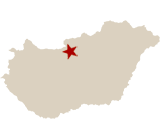An Introduction to Hungary
Linguists believe the Hungarian people came from a region between the Volga river and the Urals, in modern-day Russia. Arriving in the territory of what is now Hungary, the late 9th century prince Arpad began the creation of a state recognised in 1000 AD when his great grandson received a crown from the Pope. The subsequent Kingdom of Hungary endured 946 years, latterly as part of a dual monarchy with the Austrian Habsburg Emperors - and at times has been regarded as one of the cultural centres of the Western world. See full country profile.Latest Research News from Europe (Other)
5 current Other European jobs including:
Survey Research Manager, Remote Working - Worldwide, $ Competitive salary - (posted Feb 27 2024)
Head of Consumer Market Intelligence (CMI), Kilchberg, Switzerland, CHF Competitive - (posted Nov 20 2023)
Head of Consumer Market Intelligence (CMI), Kilchberg, Switzerland, CHF Competitive - (posted Nov 17 2023)

GOVERNMENT: Parliamentary republic
AREA: 93,030 sq km
POPULATION: 10,014,324 (July 2011 est.)
MAJOR LANGUAGE: Official Language: Hungarian

Some business and general info
The Market Research Industry
Trade and Industry in Hungary
Another entrepreneur is perhaps Hungary's most famous citizen of the last fifty years - Erno Rubik invented what he called the Magic Cube in 1974 and rocketed to fame from 1980 onwards - more than 350m have been sold to date, making it by some distance the world's top-selling puzzle game and arguably the world's best-selling toy. Its international governing body, the World Cube Association, has organised competitions and kept the official world records since 2003, and some impressive performers have emerged. Although it has around 43,252,003,274,489,856,000 (4.3 x 10 to the 19) permutations, Australian teenager Feliks Zemdegs set a best average time in 2011 of 7.64 seconds. But it's the multiple blindfolded records that are perhaps the most amazing...
Go to next country
Linguists believe the Hungarian people came from a region between the Volga river and the Urals, in modern-day Russia. Arriving in the territory of what is now Hungary, the late 9th century prince Arpad began the creation of a state recognised in 1000 AD when his great grandson received a crown from the Pope. The subsequent Kingdom of Hungary endured 946 years, latterly as part of a dual monarchy with the Austrian Habsburg Emperors - and at times has been regarded as one of the cultural centres of the Western world.
The largest province of the Habsburg Empire, Hungary lost about 70 percent of its territory in the 1920 Treaty of Trianon - along with two thirds of its population (including 3.4m ethnic Hungarians - one third of the total) and all its coastline. Its communist era - punctuated by the revolution of autumn 1956 which overthrew the regime, only for Soviet troops to enter days later and restore it - lasted forty-two years, famously crumbling in 1989 following the opening of the border with Austria. Now a parliamentary republic, Hungary is classified as a high-income economy and joined the EU in 2004 after a referendum.The country's official language, Hungarian or Magyar, is part of the Finno-Ugric group and is the most widely spoken non-Indo-European language in Europe.
GDP: $195.6 bn (2011 est.); $19,591 per capita
Religions Catholic 54.5% Protestant 19.5% other religions 0.5% No Religion 14.7% No answer 10.1%
Currency: Forint (HUF); $US 1 = 233 HUF
Telephone Code: + 36
MR Association(s):
PMSZ (Association of Hungarian Market Research Organizations)
Hungary is the 43rd largest research market in the world, and the 21st largest in Europe. 74 percent of MR turnover comes from domestic clients and 26 percent from international. According to the ESOMAR Global Prices Study 2012 the country was the 52nd most expensive for carrying out research.
Source: ESOMAR
Hungary's medium-sized, open economy grew quickly out of a socialist model in the 1990s and has been a member of the OECD since 1995 and the EU since 2004. The private sector accounts for more than 80% of GDP and foreign ownership and investment have been high.
The country got an IMF assistance package worth over $25 billion in 2008, saw its economy contract in 2009 by 6.8% but following strong government action began to recover in 2010 with exports leading the way. Unemployment however remains high and Hungary is under international pressure to reduce its deficit.
Exports totalled $103.1 bn in 2011 with machinery and manufactures, food and fuels, and raw materials central. Key partners in 2010 were Germany with 25.5%, and Romania, Austria and Slovakia each with just over 5%. Imports totalled $93.9 bn in 2011; Germany again is way out in front as a partner (25.2% in 2010), while Russia (8.6%), China and Austria (6% each) are also important, and commodities are similar to the export list.
Email me:
laurence@mrweb.com

